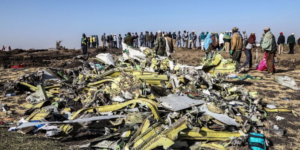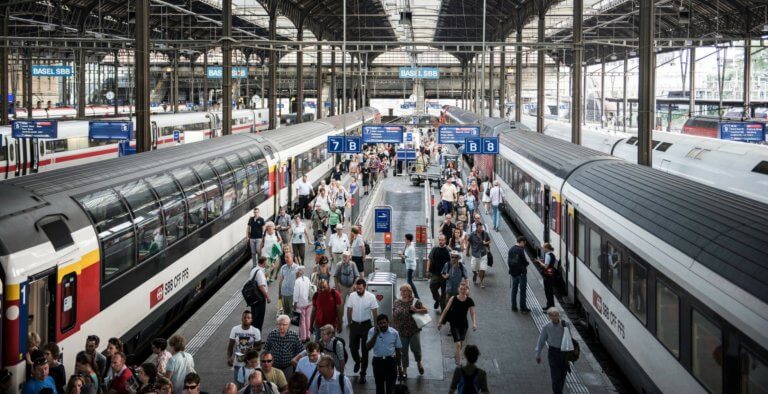by Conall Mac Aongusa, Transport Planner
The airline and aviation industry is seen as a very safe industry yet recent accidents including in particular the 737MAX crashes in Indonesia and in Ethiopia in November 2018 and March 2019 respectively have shown that despite the efforts, resources and leadership attention directed towards safety that particular vulnerabilities still exist.
The airline industry has been a leader introducing and implementing automation in their aircraft systems for a number of decades and the industry record shows that they have the lowest rate of accident fatalities of all transport industry in terms of fatalities per billion passenger kilometres.
Global Fatality Rates by mode (fatalities per billion passenger kilometres)
| Transport Mode | Fatality Rate |
| Air | 0.1 |
| Rail | 0.16 |
| Bus | 0.43 |
| Car | 4.45 |
| 2-wheel | 52.6 |
Source: EU Rail Agency /International Rail Safety Council

Modern commercial airplanes have automated systems that can automate or even replace pilots performance, manage engine power, control and navigate the aircraft and even in some cases carry out complete landings. The average pilot flies the plane for between three and six minutes of the whole flight : during take-off, during the initial climb and during the landing manoeuvres. However, most surveys indicate that consumers are not aware of how much of aviation is already automated.
In relation to the 737MAX accidents – caused on first analysis, in both accident cases, by a faulty data sensor that triggered software to control an automated anti-stall manoeuvre (the MCAS software) which the pilots could not over ride as they were not aware of it – it would appear that the underlying cause of the accident is not in the automated system per se but in the regulation and governance regime that allowed a new automated technology to be introduced without comprehensive regulatory oversight of the change process including fundamentally informing and the training of pilots in the new anti-stall technology.
Where aircraft accidents and incidents do occur, it remains the fact that human error is the most common cause. How can the industry and each airline know how safe is safe enough? What role does regulation and governance play in running a safe industry and a safe organisation? Leadership opinion in the airline industry points to the need for predictive approaches to identifying future threats to air safety but this has an impact on the way regulators seek evidence for future regulations because historical data will not identify future threats.
So, what are the lessons to be learnt from these 737MAX incidents and from the airline industry approach to safety for other land-based transport systems such as railway systems, metros and connected and autonomous vehicles (CAV)?
Firstly, it is that operator awareness training and safety procedures are central and critical to the proper introduction and operation of automated systems. Secondly, the trust of the operator and the user of the automated system in the safety and reliability of the technology is paramount in securing acceptance of the automated system.
To address both these issues the introduction of automation, like any new technology or work process has to be implemented in a rigorous, comprehensive and systematic change management process that sits within a strong regulatory and governance framework.
A regulatory and governance regime provides the basis for building the trust that the system will keep you safe and that the aircraft/train/car/vehicle will keep you safe from the beginning to the end of your journey.
Consistent and replicable training and safety procedures are important at both the industry and at an organisational level. They must be backed up by a regulatory and governance regime that builds trust in the transport system whether it’s automated or not.
For automation of trains and train systems, there are analogous issues of governance and regulation with the aviation industry because the automation is being introduced to large organisations where certain functions or roles of skilled operators are being replaced by technology. Therefore, the introduction of new technology can be regulated and managed in a controlled way because the skilled operators are obliged to comply with the employer’s organisational rules including most particularly the safety regime. The most important thing is to have a change management process that is properly and rigorously regulated governed and applied.
But how different must the approach be to introduce automation in mass-market cars? This presents a challenge of a different order of complexity because the individual car is owned, controlled and operated by individuals who have become used to a far greater range of freedoms and autonomy to make their own decisions about driving their own cars.
One of many challenges for the introduction of Connected and Automated Vehicles (CAV) is to build public trust in the safety of the autonomous vehicles and in a governance and regulation system that would have oversight of them. One the one hand the purported benefits are to increase levels of road safety but on the other hand CAV proposes to take away individual freedom to own and operate a car and to replace it with a car that drives itself.
What the 737MAX case has shown us is that while strong governance and regulation is required to build and maintain public trust in any transport system, we must be ever vigilant that the integrity and efficacy of the safety systems including the regulation of the change management processes must be protected and defended in the interests of vehicle user and the public at large.


